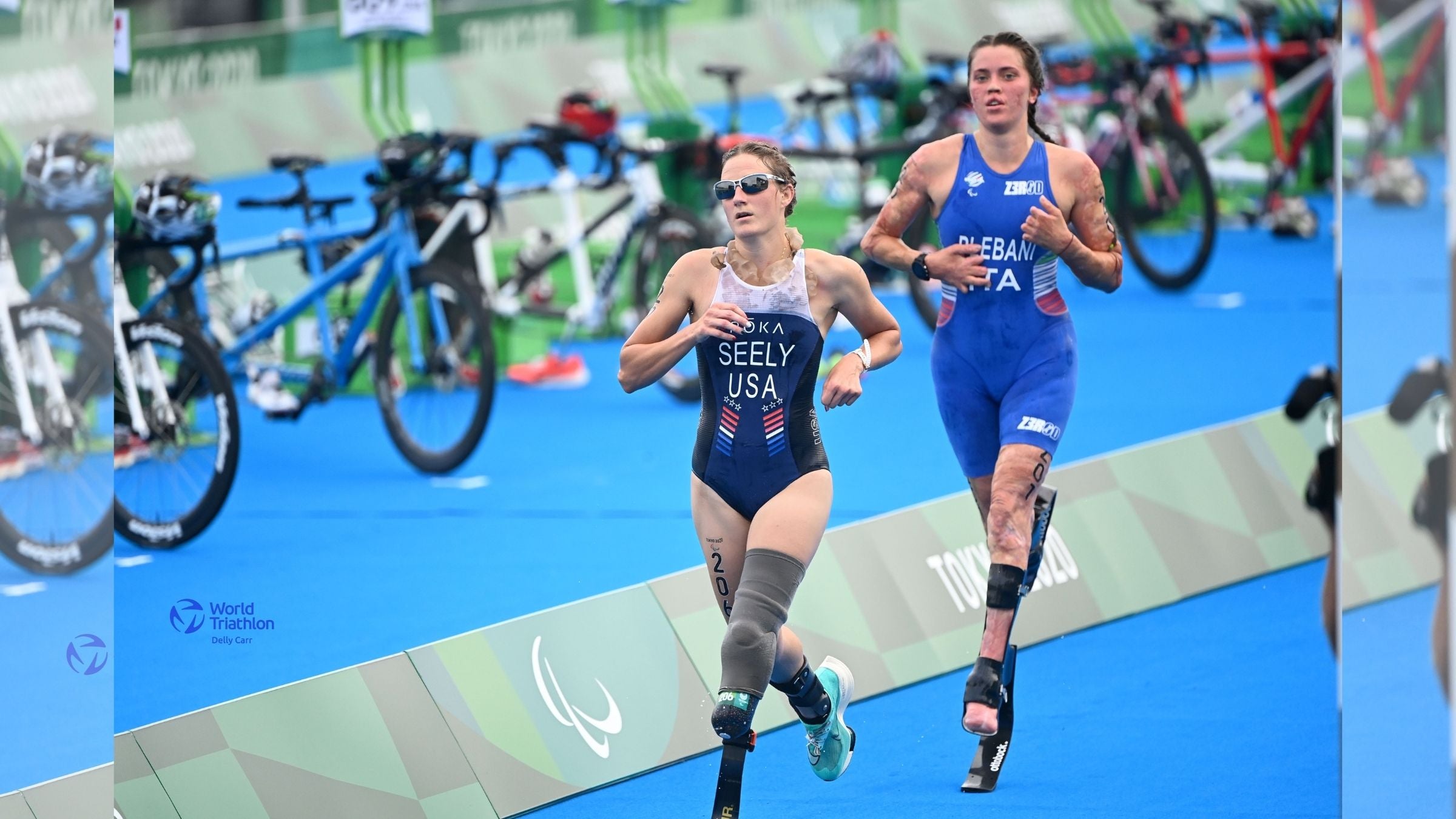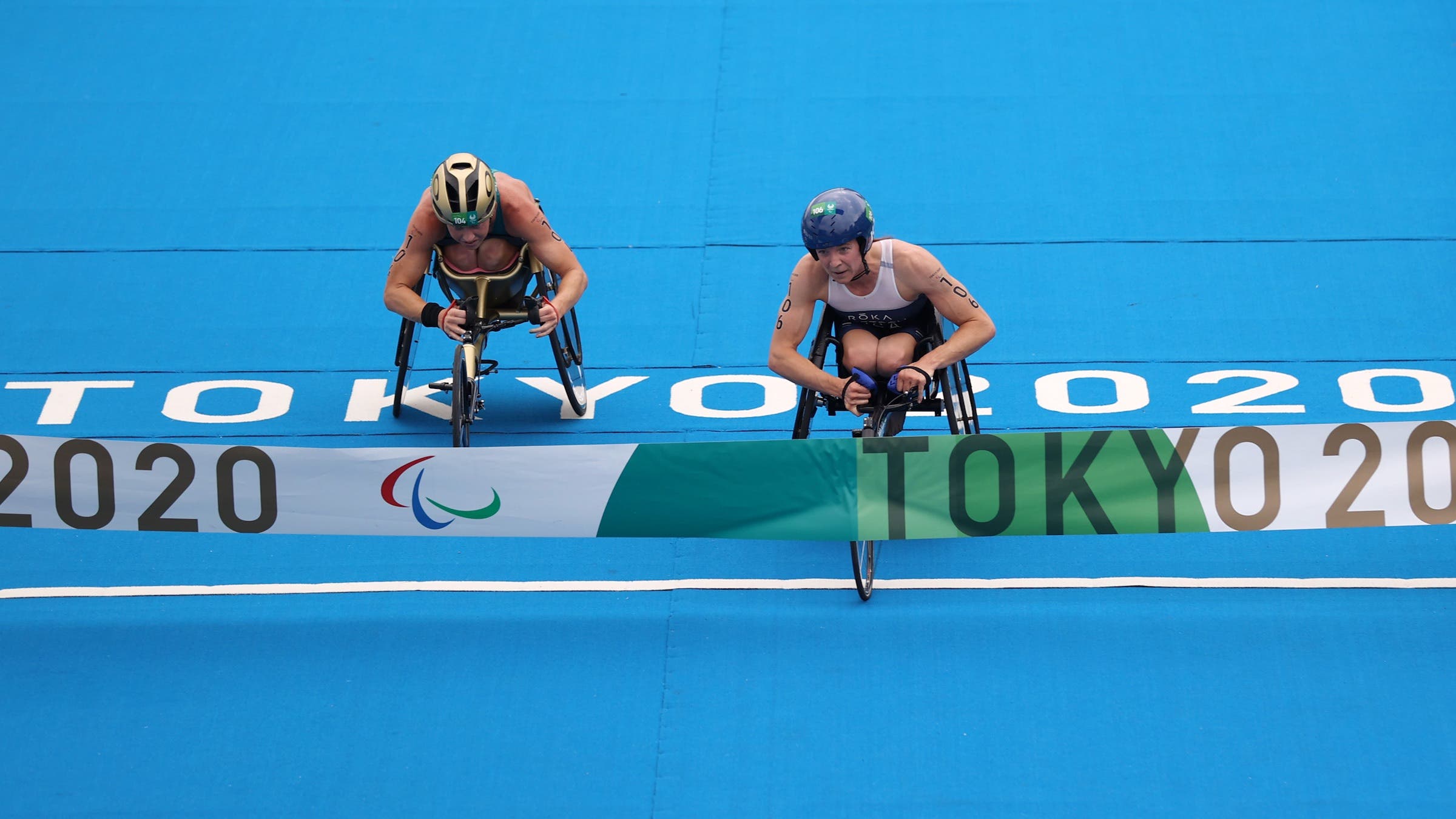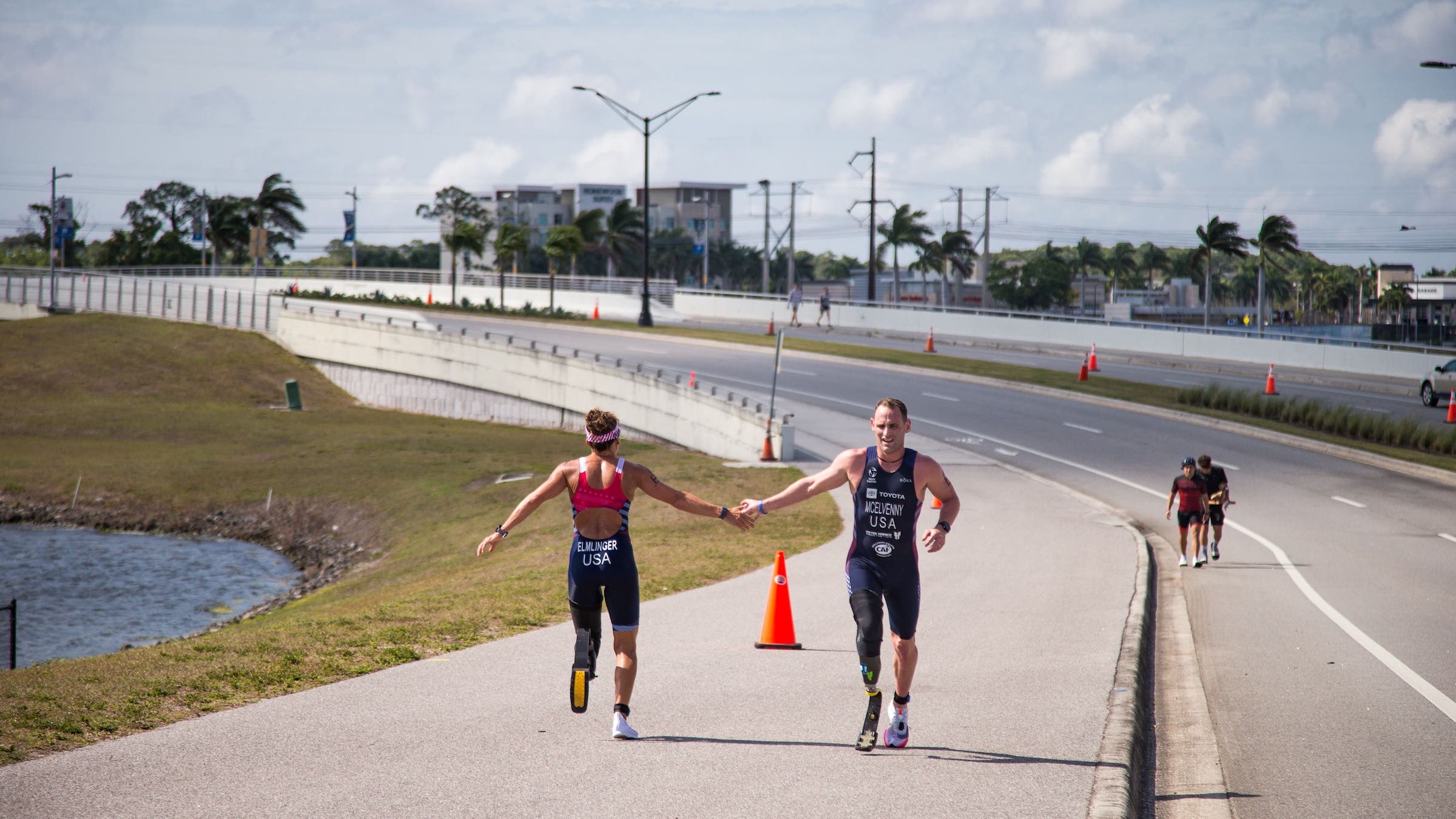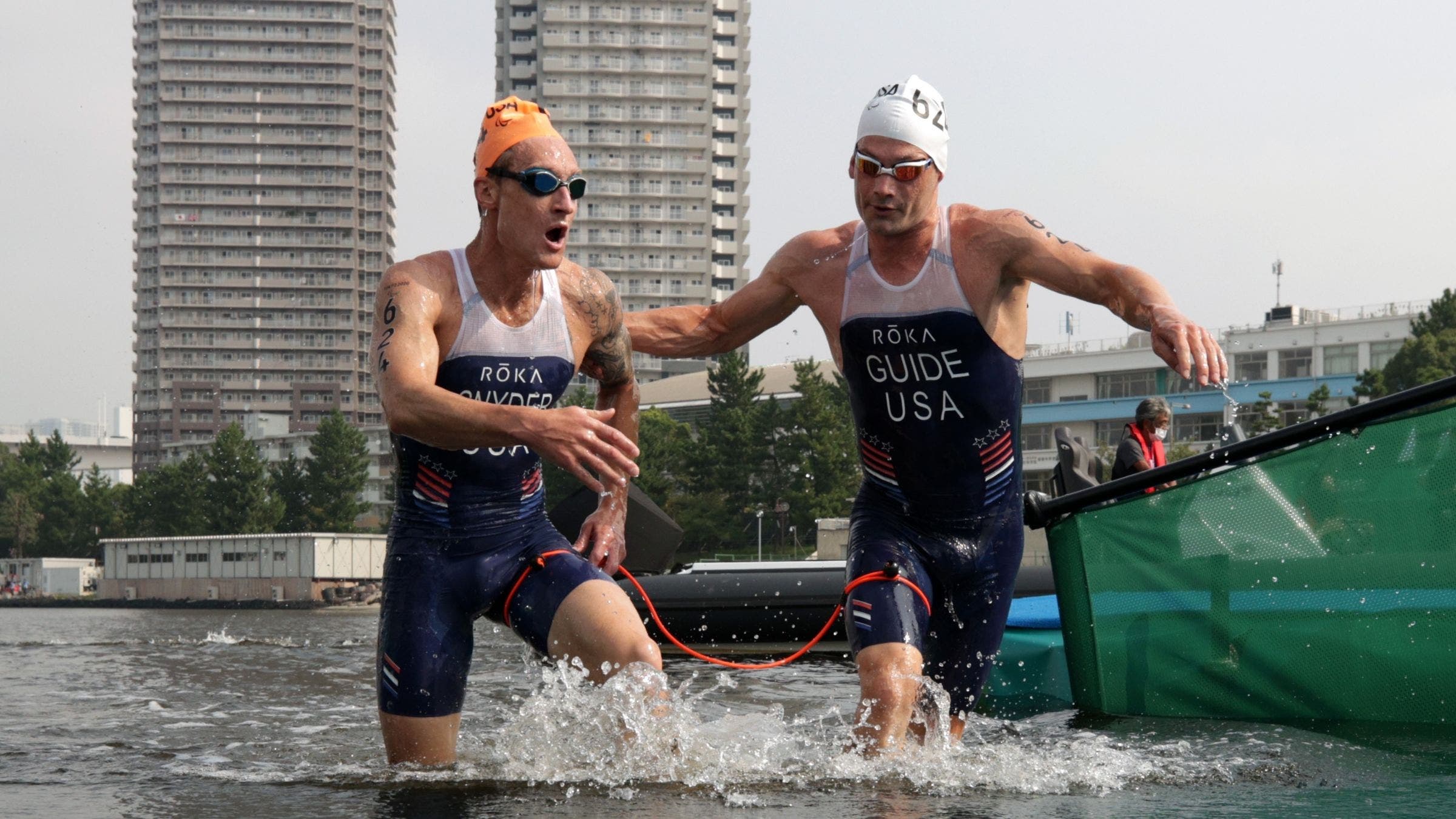Despite Growth, Lack of Opportunity and Unequal Pay Still an Issue in Paratri

(Photo: Delly Carr/World Triathlon)
Since the debut of paratriathlon at the 2016 Paralympics in Brazil, the sport has enjoyed terrific success and tremendous growth. But there is still much work to be done.
Paratriathlon is a category of triathlon that allows those with documented physical disabilities to participate and compete in triathlon nationally and internationally. The distinction allows for fair competition through a classification system, the use of sighted guides for blind athletes, handcycles and racing chairs for those who utilize a wheelchair, and prosthetic limbs and other adaptive equipment. Paratriathlon’s rules, courses, and distances are largely unchanged from the rest of triathlon—that is, for athletes without disabilities. But in many ways, paratriathletes are not offered equal opportunities at the elite or recreational level.
RELATED: What is Paratriathlon? Understanding Triathlon in the Paralympics
The good: A growing elite field
As paratriathlon continues to grow, competition becomes faster, fiercer, and even more exciting. We were witness to this in Tokyo with one of the closest-ever triathlon finishes. In the women’s wheelchair division, American Kendall Gretsch overtook Australian Lauren Parker in the final meters in a thrilling sprint, winning gold by one second. These recent advancements in paratri are not to be discounted. In my eleven years in the sport, I have witnessed undeniable progress—but further and faster growth is needed to go from inclusion to equity, a key commitment of World Triathlon.
When considering the sport’s progress to date, along with upcoming initiatives, the movement looks bright. A few areas of future growth include increasing the number of participants around the world—especially from women, those with greater degrees of disability, and underrepresented nations—and introducing a classification for intellectual impairment.

The good: Exciting new formats
World Triathlon, the governing body of paratriathlon, recently announced that for the first time Continental Cups will be added to the 2022 paratriathlon race calendar. This addition introduces more racing opportunities and ensures a path for new talent to earn their way onto the hard-to-break-into ranking list.
On the horizon is the process of building and creating a bid to include a paratriathlon mixed relay in the Paralympic Games for the first time in Los Angeles in 2028. Work has already begun, and the first test event for paratriathlon mixed relay took place this spring to great success.

The challenge: Equal opportunity for men and women in paratriathlon
Many aspects of creating, growing, and implementing the sport haven proven to be successful. World Triathlon has stepped up to the plate for disability inclusion when many international sport governing bodies have not. After hugely successful events in its first two Paralympic showings—the 2016 Rio de Janeiro and 2020 Tokyo Paralympic Games—the sport was awarded additional medal events at the conclusion of each Games to include more classifications and therefore more athletes. After Tokyo, two additional medals for men and one for women were added to the Paris 2024 Games. This ensures that all six male paratriathlon categories will be represented in Paris in 2024, while women will still have one category that is not represented in Paris—PTS3: moderate impairment. That denial means World Triathlon must work harder for gender equality; ideally, by 2024, there will be a large and competitive field in the final women’s category that has not yet been granted a medal, ensuring the International Paralympic Committee will allow the final medal to be added and gender equality to be restored.
The challenge: Pay disparities in paratriathlon
Last year, World Triathlon announced an increase of $250,000 to the World Triathlon Championship Series prize purse for elite athletes. It was a celebrated announcement, but it sent a message and a punch in the gut to paratriathletes around the globe.
By investing another quarter-of-a-million dollars in elite triathlon before allocating or advocating for a single dollar to be spent toward a paratriathlon prize purse, the sport’s leaders effectively told the field of disabled athletes that elite triathlon is a career, while elite paratriathlon is a hobby. It was crushing to disabled athletes who have been training, racing, and working to fund the international travel and racing costs associated with being one of the best athletes in the world. It serves as a reminder to each of us that for much of the world we, the disabled, are less than. Less worthy of equal pay, less appealing than our able-bodied peers, less deserving of recognition for being the best at what we do.
I hope this message was an unintentional oversight, but it was a reminder nonetheless of what has been reinforced for our entire lives. The message that echoed the globe is not in line with World Triathlon’s view on equality—and now, with a proposal to professionalize the sport drafted and ready for presentation, World Triathlon has the chance to send an intentional message: Our disabled athletes are not less than, they are equals. This is an opportunity for World Triathlon to remain one of the global leaders in sport and a champion for equality.

The challenge: Opportunities to race for paratriathletes
Other areas of heavy focus include a lack of age-group and elite level race opportunities that disproportionately affects paratriathlon. The 2022 paratriathlon race calendar offers three top-tier racing opportunities. That is half the number of races on the World Triathlon Championship Series calendar. The difference only grows when World Cup and Continental Cup races are taken into account. The number of athletes racing outpaces the number of starting positions at all levels, especially in the men’s categories. To put this into perspective: At Paris 2024, there will be more Paralympic than Olympic athletes competing, yet this year there are half the number of high-level races for paratriathletes. The lack of available race starts will hamper the growth of the sport if not corrected.
RELATED: How to Make Triathlon More Accessible for Athletes With Disabilities
The work continues
If advocacy work is effective and my body holds up, it would be amazing to end my career as part of the first class of athletes to compete in paratriathlon’s debut at the Paralympic Games (2016), but also the first class of athletes to welcome paratriathlon mixed relay to the Paralympic Games. I can hope, and then I can put my head down and get back to work to create a larger, healthier, and more equitable environment for future athletes with a disability, because the growth of this movement is about more than sport. This movement is a vehicle toward equality in all facets of life. Sport brings us together, teaches us, gives us the power to dream and to achieve—and provides a platform to change the world for the better.
Allysa Seely is a two-time Paralympic Gold medalist in the PTS2 category and an advocate for equality. She currently serves on the World Triathlon Executive Board and Athlete’s Committee and is ex-officio for USA Triathlon Board of Directors and Athlete’s Advisory Council.